A collection of my astrophotographs, you can click on the images for a full resolution view!
Comet C/2022 E3 ZTF
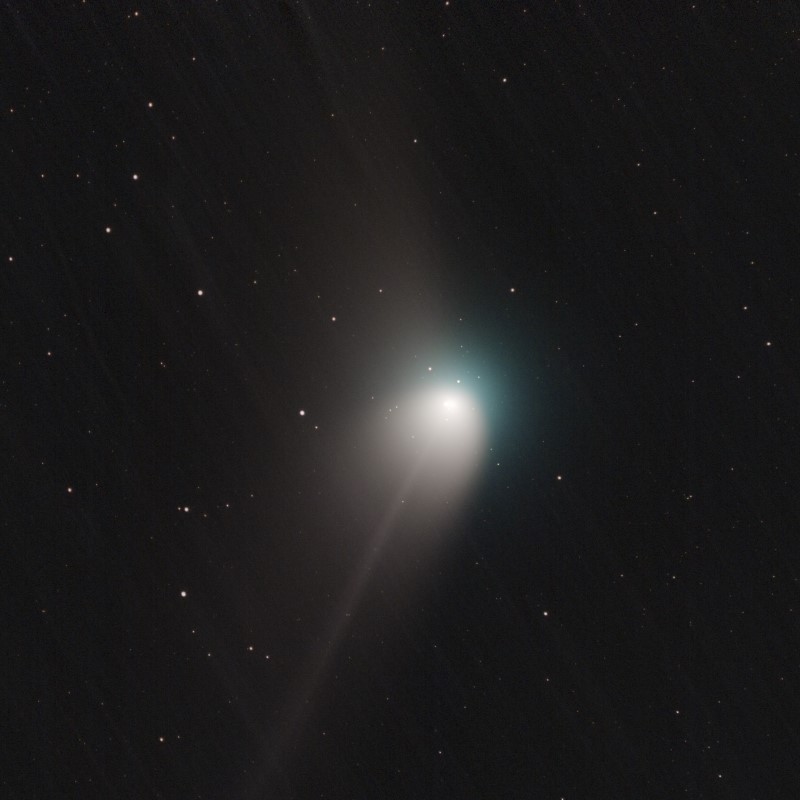
Gear
| Telescope |
Orion ED80 |
| Camera |
Sony a6000 FS mod |
| Mount |
iOptron Skyguider Pro |
|
Acquisition
| Sky |
Bortle 4 |
| Elevation |
85m |
| Integration |
??? |
| Exposure(s) |
??? |
| ISO |
??? |
| Calibration |
Flat |
|
Main Object
| Name |
Comet ZTF |
| Designation |
C/2022 E3 |
| Type |
non-periodic comet |
| Magnitude |
~5 |
| RA |
plate solve this |
| Dec |
here as well nerd |
|
The high position on the night sky allowed for some great astrophotography opportunities for this comet well into the night, as opposed to most bright comets that are only visible shortly after/sunrise. 3 distinct trails are visible, the diffuse dust/ice tail towards the bottom left along with the sharply defined ion tail, with the antitail pointing up in the image.
This is a fairly old dataset, that i couldn't really get to process properly after i collected it. But i decided to give it another shot recently, and the resulting image turned out surprisingly great.
Triangulum Galaxy (130PDS first light!)
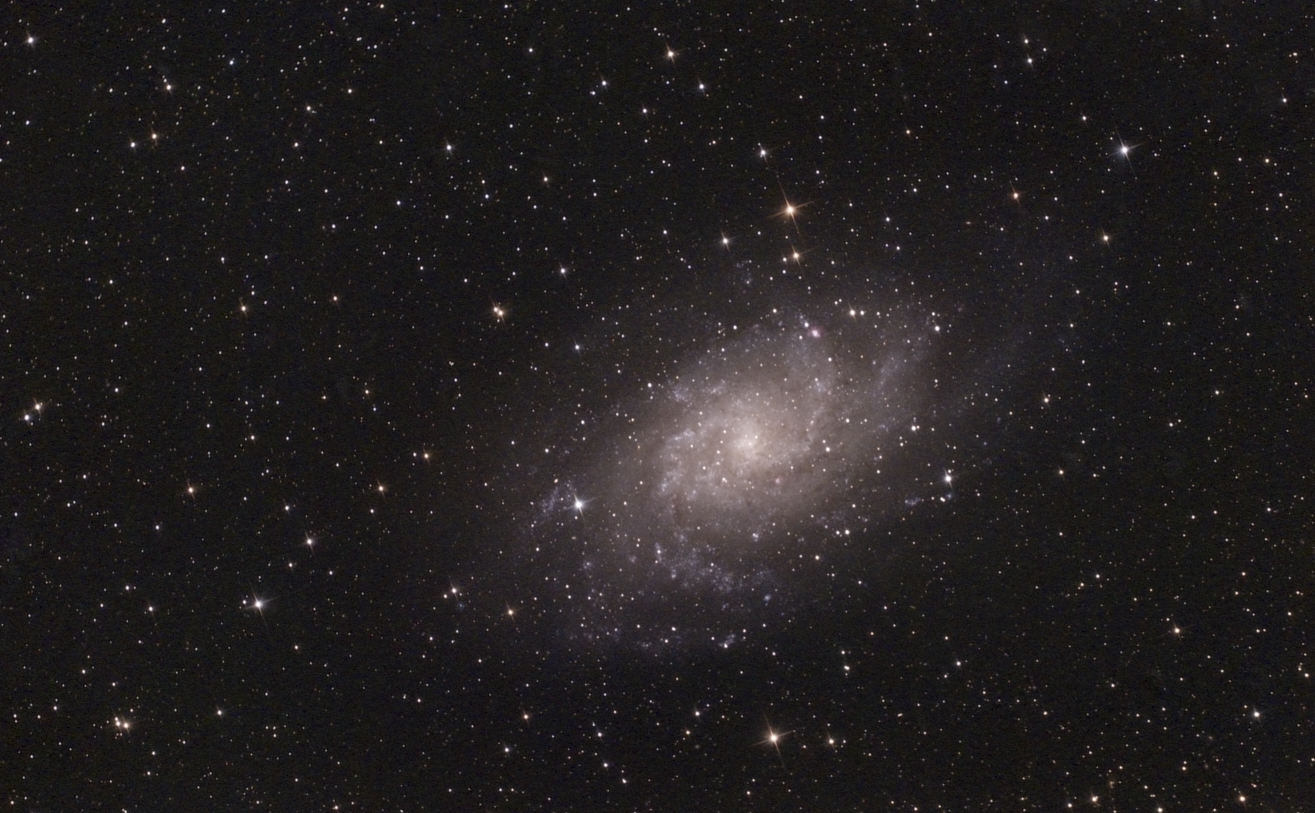
Gear
| Telescope |
Sky-Watcher 130PDS |
| Camera |
Sony a6000 FS mod |
| Mount |
iOptron Skyguider Pro |
| Guide Scope |
ZWO Mini Guide Scope |
| Guide Cam |
ZWO ASI 120mm Mini |
|
Acquisition
| Sky |
Bortle 4 |
| Elevation |
85m |
| Integration |
1h 0m |
| Exposure(s) |
20x181s |
| ISO |
1600 |
| Calibration |
Flat |
|
Main Object
| Name |
Triangulum Galaxy |
| Designation |
M33 |
| Type |
SA spiral galaxy |
| Magnitude |
6.0 |
| RA |
1h 35m 10s |
| Dec |
30° 46' 46" |
|
The Triangulum Galaxy, named after the constellation it sits in, is the third largest member of the local group, although it's the smallest spiral galaxy therein. The galaxy has a weak spiral structure, with no central bar. Relative to earth, it is almost face-on, having an apparent inclination of 54°, making observation of star clusters and nebulae in it relatively easy.
This image was my first light of the 130PDS. Surprisingly my mount handled it great, with 1 exception. The declination mounting bracket is only fastened with 1 screw, and thus the dec bracket moved when the telescope slewed from leaning right to left. This caused about a third of the data to be unusable due to significant star trailing. I'll have to figure out a way to fasten the bracket better, since it's causing a bit of wobble in windy conditions. Anyhow, for a first test, i'm very happy with the results :D.
Lagoon & Trifid nebulae
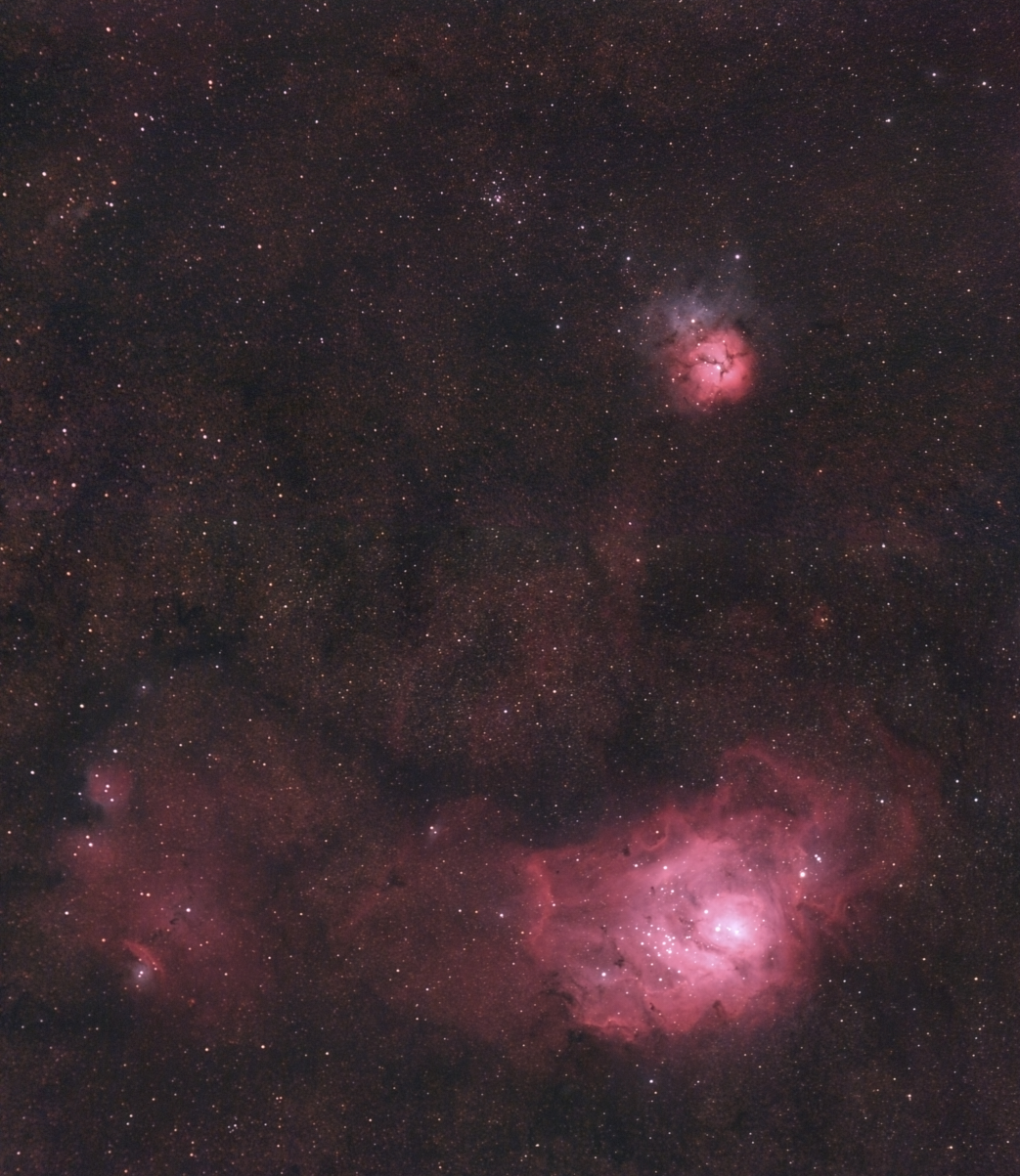
Gear
| Telescope |
Orion ED80 |
| Camera |
Sony a6000 FS mod |
| Mount |
iOptron Skyguider Pro |
| Filter(s) |
STC Astro MS |
| Guide Scope |
ZWO Mini Guide Scope |
| Guide Cam |
ZWO ASI 120mm Mini |
|
Acquisition
| Sky |
Bortle 3 |
| Elevation |
110m |
| Integration |
1h 16m x2 |
| Exposure(s) |
38x120s x2 |
| ISO |
3200 |
| Calibration |
Flat, Bias |
|
Main Object
| Name |
Lagoon nebula |
| Designation |
M8 |
| Type |
Emission Nebula |
| Magnitude |
6.0 |
| RA |
18h 05m 04s |
| Dec |
-24° 22' 40" |
|
Positioned at the core of the Milky Way, the Lagoon nebula shines as a naked-eye visible pearl in the night sky. The hydrogen gas in the nebula is ionized by hot stars from the open star cluster Herschel 36, positioned in the center of the nebula. North from the nebula lies its companion, the Trifid nebula. Another emission nebula, consisting of both red hydrogen and blue oxygen gas, leading to the iconic double-colour look.
This was my first attempt at a mosaic, this one consisting of 2 panels.
M81 Group IFN
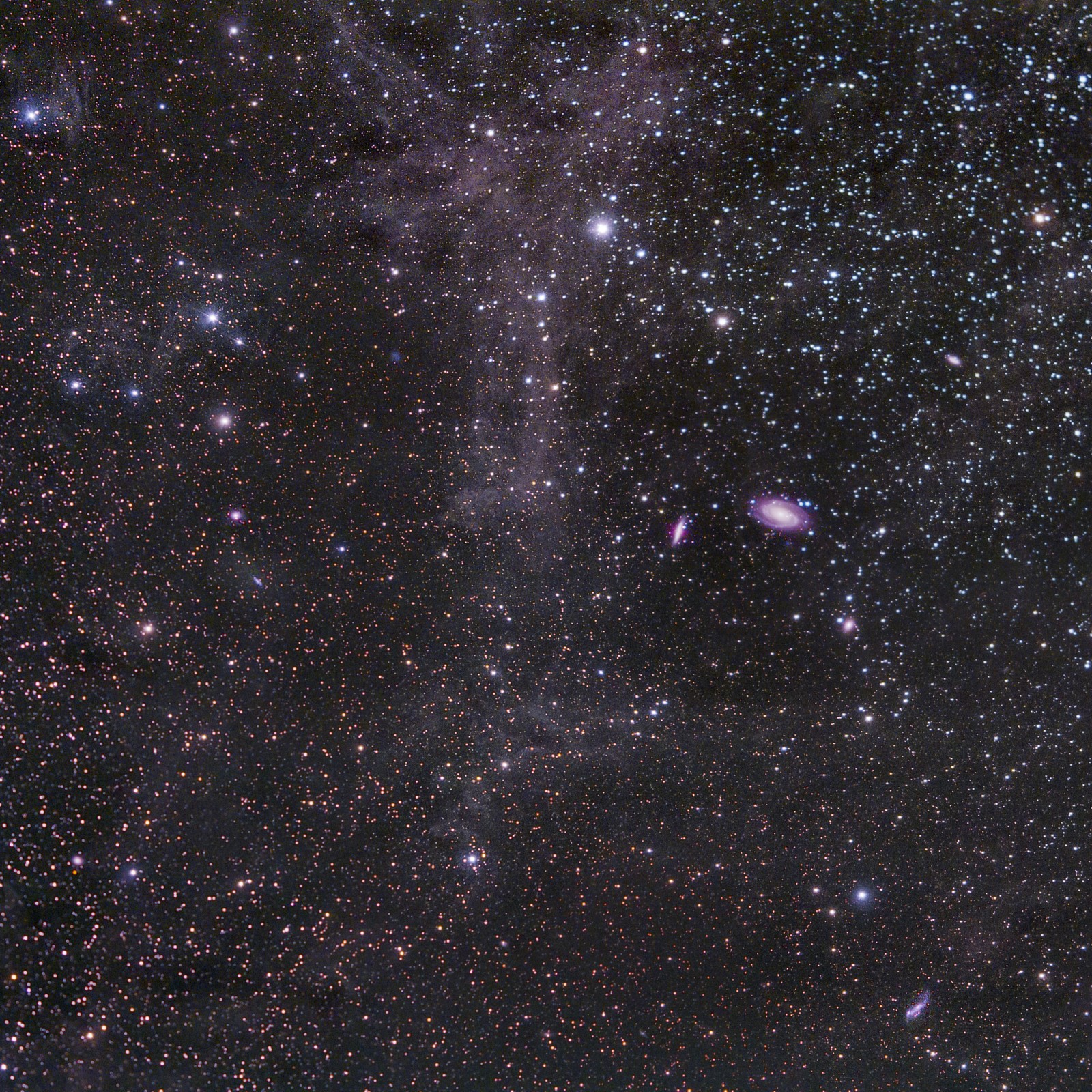
Gear
| Lens |
Samyang 135mm F/2 |
| Camera |
Sony a6000 FS mod |
| Mount |
iOptron Skyguider Pro |
| Filter(s) |
STC Astro MS |
|
Acquisition
| Sky |
Bortle 4 |
| Elevation |
69m |
| Integration |
5h 04m |
| Exposure(s) |
38x480s |
| ISO |
200 |
| Aperture |
F/4 |
| Calibration |
Dark, Bias |
|
Main Object
| Name |
M81 Group IFN |
| Designation |
LBN 691 |
| Type |
Integrated Flux Nebula |
| Magnitude |
unknown |
| RA |
9h 39m 02s |
| Dec |
65° 41' 48" |
|
IFN's, or Integrated Flux Nebulae, are a relatively new discovery in optical astronomy. These nebulae lie outside the main body of galaxies, and are therefore lit up by the total flux of the galaxy, as opposed to individual stars or star clusters. These nebulae are vast in both angular and absolute size. As they lie far away from the stars illuminating them they are very dim, and take many hours of exposure time to be detectable. This nebula lies close in the night sky to the M81 galaxy group, which is visible right of center in the image.
This image was my first attempt at capturing one of these objects.
M45 - Pleiades
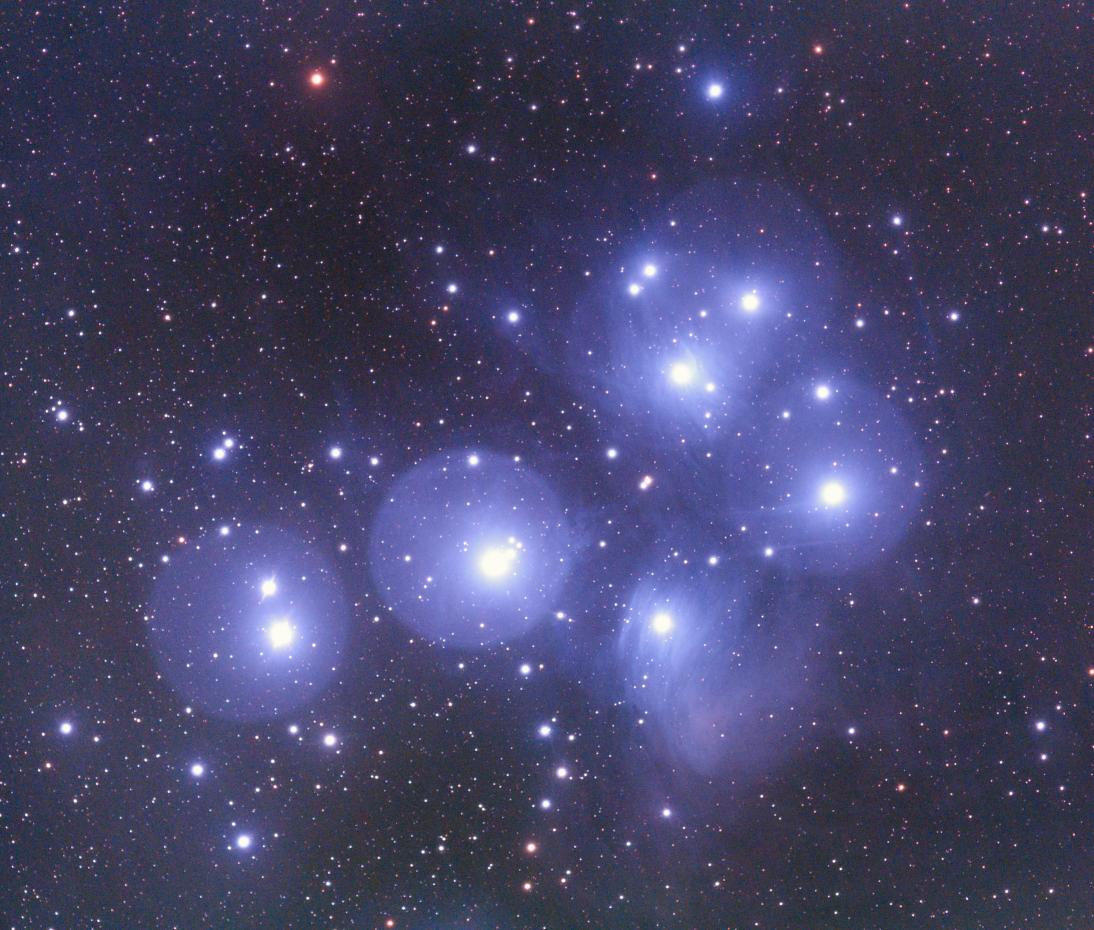
Gear
| Telescope |
Orion ED80 |
| Camera |
Sony a6000 FS mod |
| Mount |
iOptron Skyguider Pro |
| Filter(s) |
STC Astro MS |
| Guide Scope |
ZWO Mini Guide Scope |
| Guide Cam |
ZWO ASI 120mm Mini |
|
Acquisition
| Sky |
Bortle 6 |
| Elevation |
23m |
| Integration |
2h 49m |
| Exposure(s) |
56x181s |
| ISO |
800 |
| Calibration |
Flat, Dark, Bias |
|
Main Object
| Name |
Pleiades |
| Designation |
M45 |
| Type |
Open cluster |
| Magnitude |
1.2 |
| RA |
3h 38m 23s |
| Dec |
24° 11' 22" |
|
With the major stars being visible to the naked eye, the 7 sisters cement themselves as being the most widely known star cluster. Although this young open cluster starts to reveal more details through a telescope. As the star cluster is passing through clouds of interstellar material, the light from the bright blue stars is reflected in the particles, lighting up strands of dust.
Filamentary Nebula & Pickering's Triangle
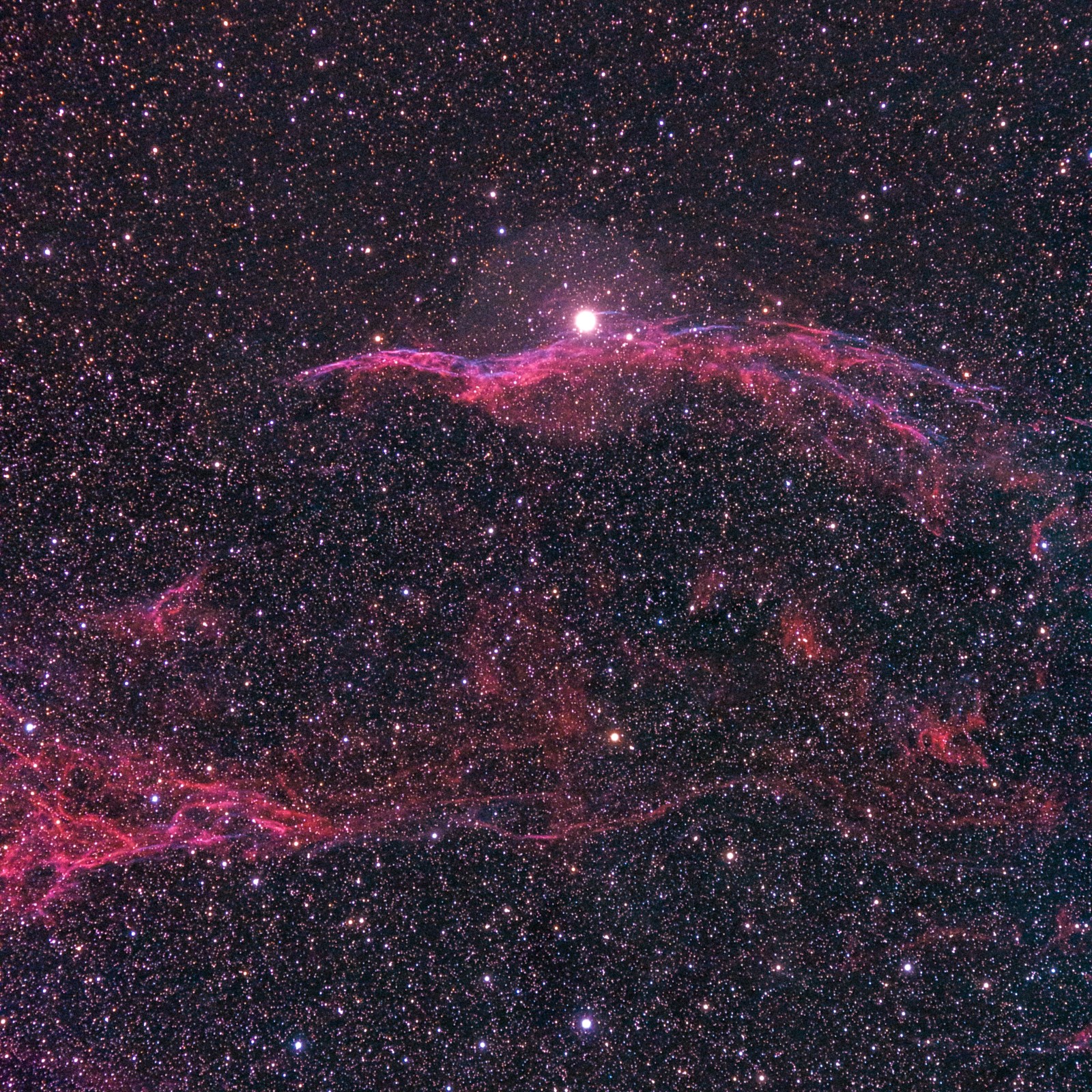
Gear
| Telescope |
Orion ED80 |
| Camera |
Sony a6000 FS mod |
| Mount |
iOptron Skyguider Pro |
| Filter(s) |
STC Astro MS |
| Guide Scope |
ZWO Mini Guide Scope |
| Guide Cam |
ZWO ASI 120mm Mini |
|
Acquisition
| Sky |
Bortle 6 |
| Elevation |
23m |
| Integration |
2h 43m |
| Exposure(s) |
54x181s |
| ISO |
800 |
| Calibration |
Flat, Dark, Bias |
|
Main Object
| Name |
Cygnus Loop |
| Designation |
Sharpless 103 |
| Type |
Supernova Remnant |
| Magnitude |
7.0 (Filamentary) |
| RA |
20h 52m 00s |
| Dec |
30° 45' 31" |
|
Estimated to be around 20.000 years old, the Cygnus Loop is a supernova remnant spanning 3 degrees across in the night sky. Strands of hydrogen and oxygen gas are blown out in a circular pattern from the location of the source star. Their high velocity through the interstellar medium leading to their ionized glow. This image pictures two of the 3 main visual components of the nebula, namely the Filamentary Nebula, seen at the top, and Pickering's triangle, seen stretching across the image from the bottom left corner.





